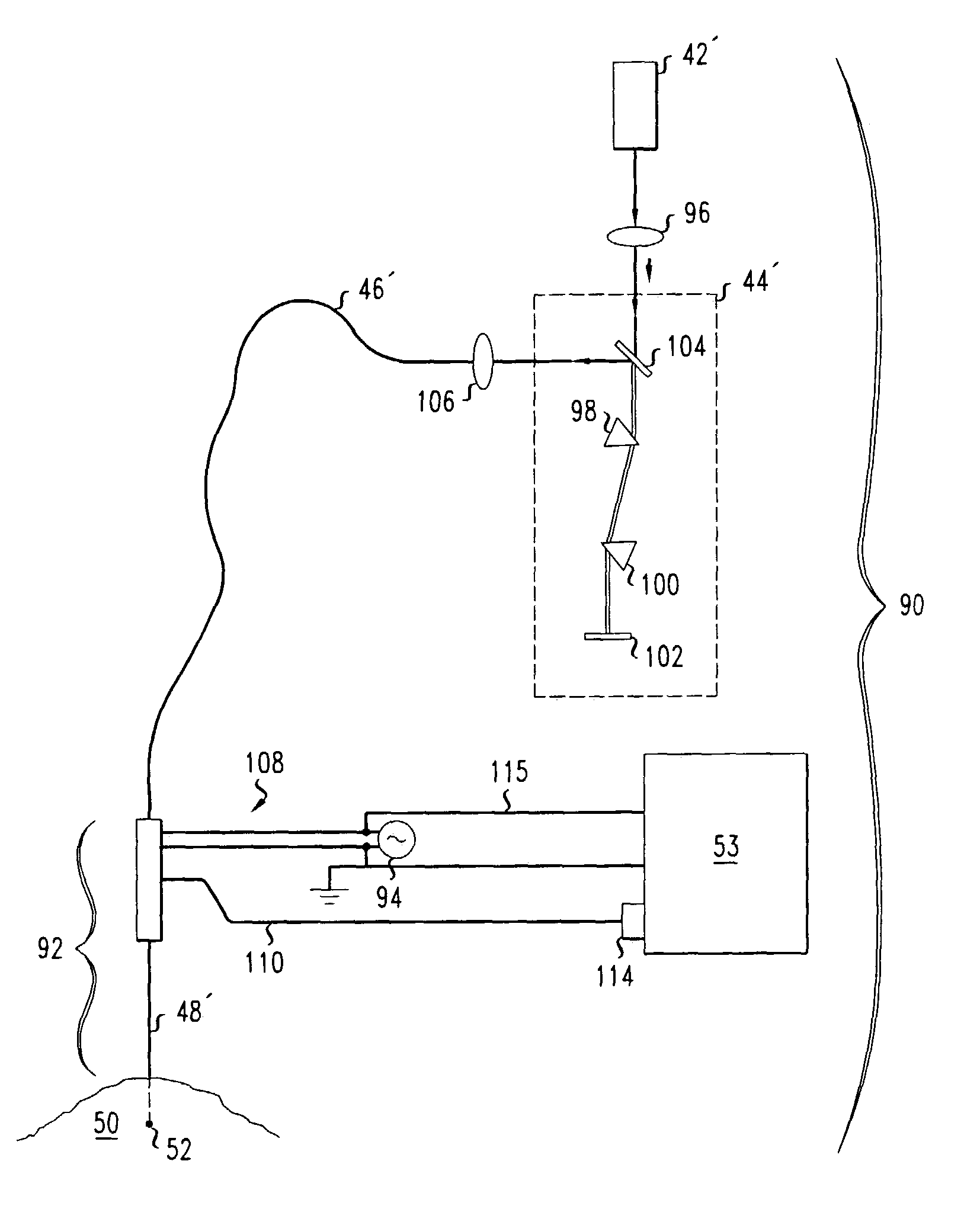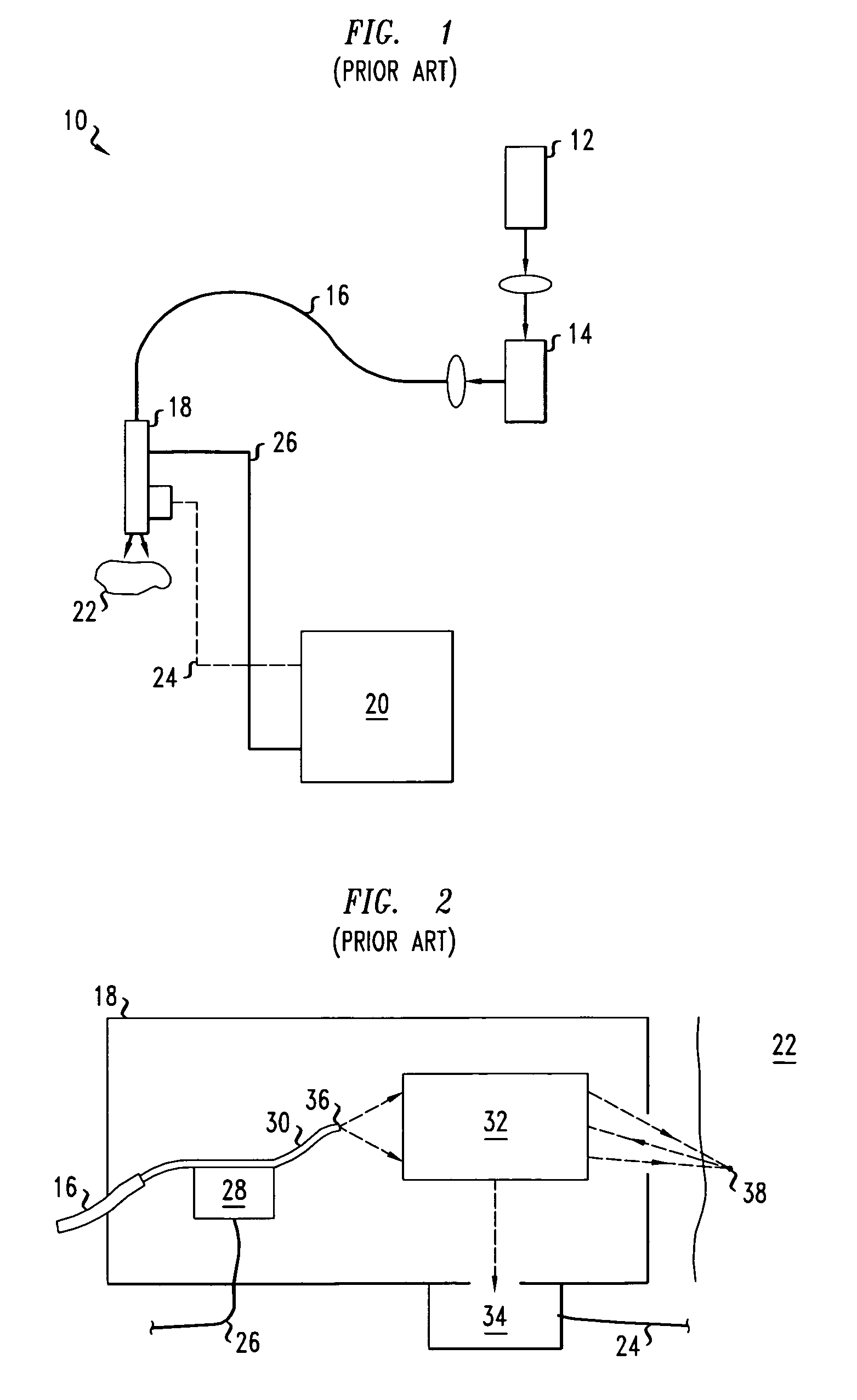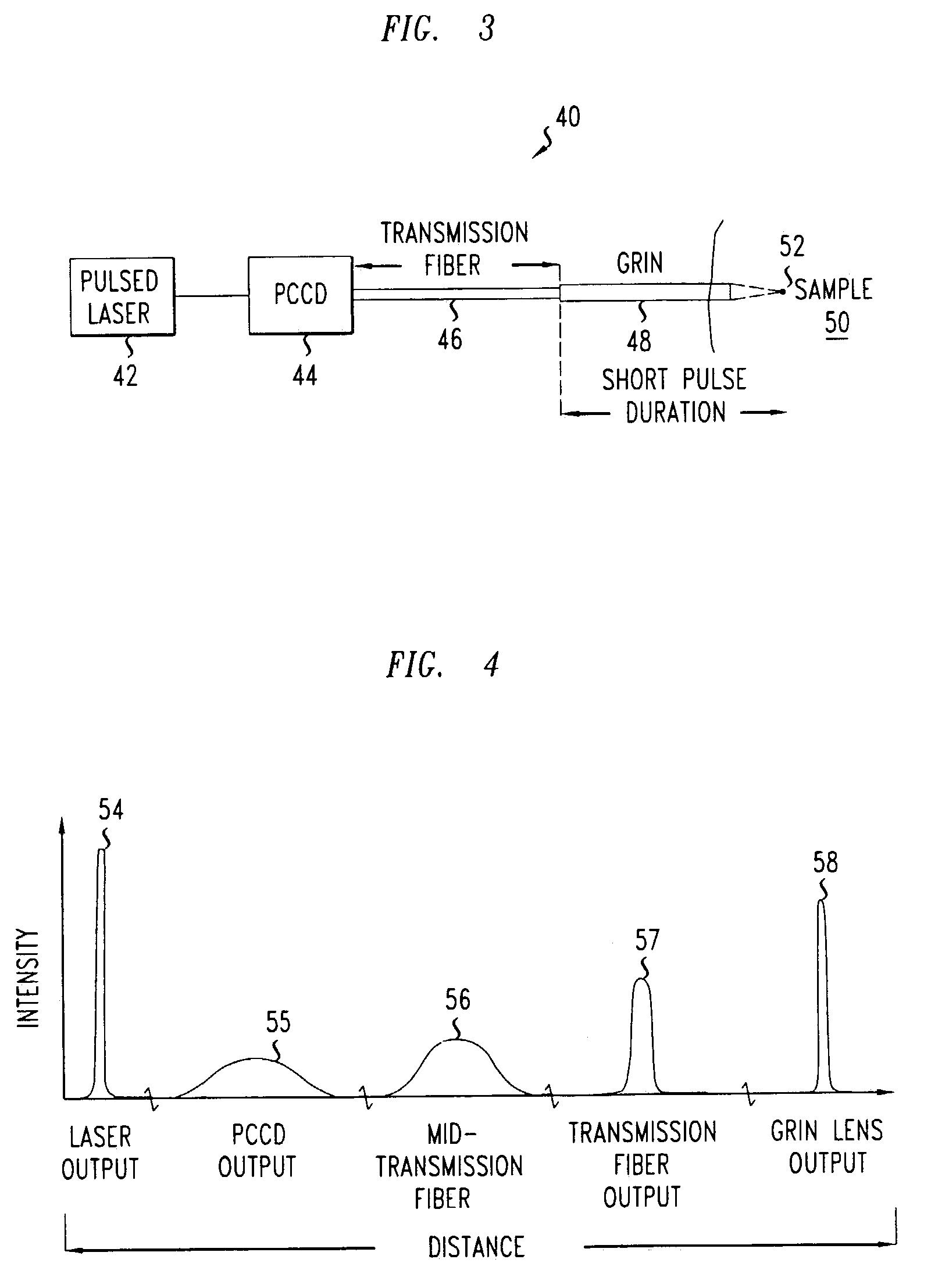Multi-photon endoscopic imaging system
a multi-photon and endoscopic technology, applied in the field of multi-photon imaging systems, can solve the problems of lowering peak intensities and low absorption rates of multi-photons, and achieve the effect of widening the optical cor
- Summary
- Abstract
- Description
- Claims
- Application Information
AI Technical Summary
Benefits of technology
Problems solved by technology
Method used
Image
Examples
Embodiment Construction
[0028]FIG. 3 schematically illustrates an illumination portion 40 of a scanning multi-photon imaging system. The illumination portion 40 includes a pulsed laser 42, a pre-compensator for chromatic dispersion (PCCD) 44, a transmission optical fiber 46, and a graded index (GRIN) lens 48. The pulsed laser 42 produces optical pulses with short temporal widths and high peak intensities. The high peak intensities are suitable for illumination light in multi-photon imaging. The PCCD 44 chirps the optical pulses from the laser 42 in a manner that pre-compensates for chromatic dispersion in both the transmission optical fiber 46 and the GRIN lens 48. The transmission optical fiber 46 delivers the chirped optical pulses to the GRIN lens 48 with low or no modal dispersion. Exemplary transmission optical fibers include single mode optical fibers (SMFs), GRIN optical fibers, and serial combinations of GRIN optical fibers and SMFs. The GRIN lens 48 has an optical core with a larger diameter than ...
PUM
| Property | Measurement | Unit |
|---|---|---|
| wavelengths | aaaaa | aaaaa |
| core diameter | aaaaa | aaaaa |
| core diameter | aaaaa | aaaaa |
Abstract
Description
Claims
Application Information
 Login to View More
Login to View More - R&D
- Intellectual Property
- Life Sciences
- Materials
- Tech Scout
- Unparalleled Data Quality
- Higher Quality Content
- 60% Fewer Hallucinations
Browse by: Latest US Patents, China's latest patents, Technical Efficacy Thesaurus, Application Domain, Technology Topic, Popular Technical Reports.
© 2025 PatSnap. All rights reserved.Legal|Privacy policy|Modern Slavery Act Transparency Statement|Sitemap|About US| Contact US: help@patsnap.com



